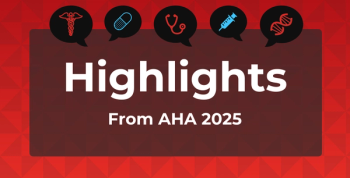
Napping Once or Twice Weekly Linked With Lower Risk of Heart Attack and Stroke
Napping during the day 1 or 2 times weekly may lower risk of heart attack and stroke, but no association was found with the duration or greater frequency of naps, according to a new study.
Taking 1 or 2 daytime naps a week may lower risk of heart attack and stroke, but no association was found for the duration or greater frequency of naps, according to a study published this week in Heart.1
Researchers sought to uncover the impact of napping on cardiovascular disease (CVD) by assessing the relationship of frequency and average duration of naps with fatal and nonfatal CVD events, such as heart attack, stroke, or heart failure. Prioritizing nap frequency is unprecedented for this topic, as prior studies have overlooked its relation to CVD risk or focused primarily on CVD deaths.
The observational study analyzed nap frequency and daily nap duration reports collected over a week from 3462 Swiss subjects aged 35 to 75 years with no prior history of CVD events. Of the study group, 2014 (58%) reported no naps, 667 (19%) reported taking 1 or 2 naps, 411 (12%) reported taking 3 to 5 naps, and 370 (11%) reported taking 6 or 7 naps during the previous week. Researchers performed Cox regressions to acquire hazard ratios (HRs) adjusted for major CVD risk factors and excessive daytime sleepiness or obstructive sleep apnea. Results included the fully adjusted risk, in which patients with no naps had an HR of 1:
- Patients with 1 or 2 naps weekly: HR, 0.52; 95% CI, 0.28-0.95
- Patients with 3 to 5 naps weekly: HR, 0.88; 95% CI, 0.55-1.40
- Patients with 6 or 7 naps weekly: HR, 0.89; 95% CI, 0.58-1.38
The adjusted risk based on nap duration was represented as well:
- Patients napping 5 minutes to less than 1 hour: HR, 0.82; 95% CI, 0.57-1.16
- Patients napping 1 hour or longer: HR, 0.71; 95% CI, 0.41-1.24
Across all 3 models, napping 1 or 2 times weekly represented the greatest decrease in CVD event risk. The decrease in HR between the unadjusted model 1 and fully adjusted model 3 for subjects reporting 6 to 7 naps (1.67 to 0.89) eliminated associations between frequent napping and CVD risk. Incidence of a CVD event was additionally found the least in subjects who napped 1 or 2 times weekly (12/667 = 1.8%) compared with subjects reporting no naps (93/2014 = 4.6%), 3 to 5 naps (22/411 = 5.4%), and 6 or 7 naps (28/370 = 7.6%). In total, 155 fatal and nonfatal CVD events occurred.
While napping 1 or 2 times weekly was shown to be correlated to a decreased risk of incident CVD events, no association was found for napping duration or for people who napped 6 or 7 times weekly. In a
The study provided preliminary evidence of the impact that weekly nap frequency has on risk of incident CVD events, they wrote. However, further research is warranted to delineate definitive associations.
“The study of napping is a challenging but also a promising field with potentially significant public health implications. While there remain more questions than answers, it is time to start unveiling the power of naps for a supercharged heart,” the professors wrote.
References
1. Häusler N, Haba-Rubio J, Heinzer R, et al. Association of napping with incident cardiovascular events in a prospective cohort study [published online September 9, 2019]. Heart. doi: 10.1136/heartjnl-2019-314999.
2. Leng Y, Yaffe K. To nap or not to nap: more questions than answers [published online September 9, 2019]. Heart. doi: 10.1136/heartjnl-2019-315442.
Newsletter
Stay ahead of policy, cost, and value—subscribe to AJMC for expert insights at the intersection of clinical care and health economics.









































